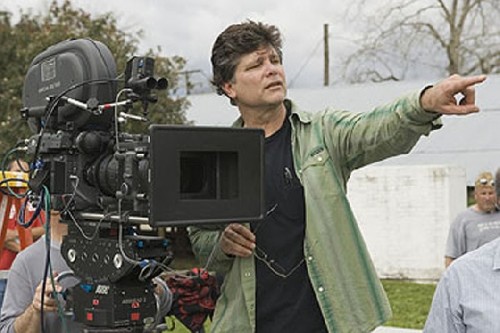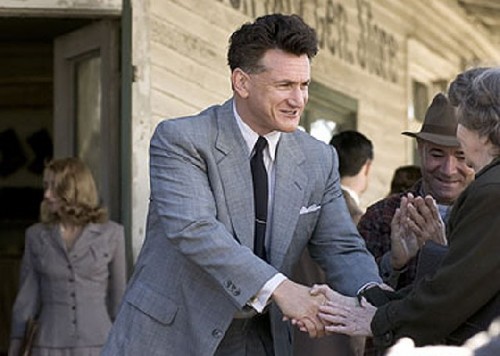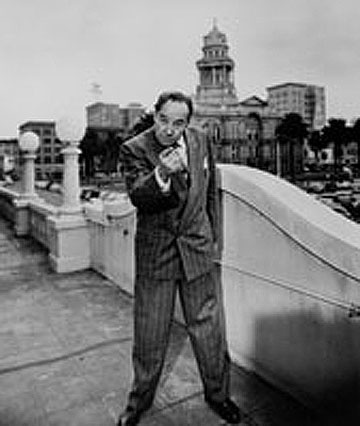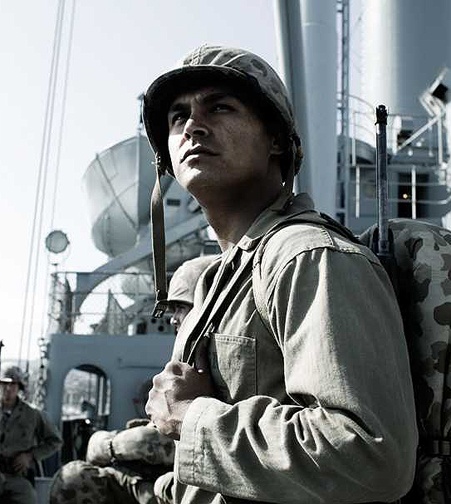Megaplex As Flop House
In the Tank with Clint Eastwood and Sean Penn
By: Charles Giuliano - Oct 24, 2006
The real battle for Clint Eastwood, director of the recently opened film "Flags of Our Fathers" is not telling the tale of the iconic photograph that recorded the planting of a flag on top of
The Club where I stay in
For a moment I contemplated some of the other available films but they are too horrible to even consider. It came down to going back to the room and reading. Or hiking either to Sophia Cappola's "Marie Antoinette" or a shorter walk to the Steven Zaillian remake of the 1949 classic "All the King's Men" which won an Oscar for Broderick Crawford as well as two other statuettes. Ironically, Crawford edged out John Wayne for best actor that year. It appears that
The thesis of this short essay entails just why bad movies can prove to be interesting. Let me revise that to say that Eastwood's "Flags" isn't so much bad as it is flat and disappointing. While Zaillian's film, with an incredible cast- Sean Penn, Jude Law, Kate Winslet, James Gandolfini and Anthony Hopkins- is a real stinker. How bad was "All the King's Men?" Well, consider that for the same time slot when "Departed" was sold out I found myself the Only person sitting in a very large
So there was a certain masochistic pleasure in reveling in these enervating experiences and exercising the critical arguments of just what makes them such failures. For a critic or serious film buff it is possible that a bad film may be as interesting and challenging as a good one but for an entirely different set of reasons. Or, as a colleague expressed to me recently, looking at bad art is precisely what sharpens our sensibilities to experience good art. Of course there is the old argument of art that is so bad it's good. The camp thing like any film by the deranged and ever so passionate but utterly awful director Ed Wood. His life and work were so camp bad that it got reconfigured as good in a hilarious performance by Johnny Depp. But what we are talking about here is not bad/good but more like bad/bad. Or worse. Like really bad.
That said just what was wrong with Eastwood's "Flags?" Well, start with the very notion of Flags and Flag waving despite the intended irony of the "remake" by AP photographer Joe Rosenthal which was actually an instant replay of the original setting of a flag as a signifier of victory. The first flag was ordered taken down by the field commander who supplied a second flag recorded in the iconic shot that became the single most famous image of World War Two. The "original" flag raisers fought on and died in the toughest battle in Marine Corps history. Three of the survivors of the Second Crew were pulled out of battle and sent on a campaign to sell War Bonds to support a bankrupt nation. They contributed greatly to the war effort but felt like frauds when applauded as the "heroes of
The tough sell for Eastwood is that potential movie goers who actually remember the image and its impact don't drive at night. The kids could care less. Heck, they mostly don't know much about
By contrast Eastwood is all over the place back tracking between gritty battle scenes, glimpses of the survivors and their heirs today, the "heroes" on tour with the Bond drive, and then some burrowing into the personal history of the individuals involved. The most important back story involves Ira Hayes, a Native American played by the Native actor, Adam Beach. The film dwells on just why he tried not to be tapped for the Bond tour preferring to stay in the battle he was trained for. It ensues that he has a much tougher fight on his hand coping with the blatant racism that bombarded him. The other soldiers call him "Chief" and on the road he devolves into the stereotype of the "drunken Indian." A cornball yahoo politician at a reception asked Hayes if he "used a tomahawk" during the battle. It's meant in humor but in hindsight it is a stinging insult. By the end of the publicity tour he was a shattered wreck of a man. His life ended in tragedy and he is shown face down dead in a pig sty. So the compelling story of Iwo Jima is that minorities- Blacks, Asians, Natives, Latinos, Italians, Poles and Jews- were good enough to fight and die on the beaches of Iwo Jima only to come back home to good old racist America. There is no racism in a foxhole but plenty to go around on the mean streets of the US of A.
If only Eastwood had the guts and good sense to just stick to the story of the tragic figure Ira Hayes. Instead Clint messed it up by cross cutting so many story lines, locations and sub plots, that one literally hankered to get back to the battle itself. If you really want to know what went down perhaps you might rent the 1949 film "Sands of Iwo Jima." John Wayne usually got it right. If you are into red blooded, flag waving






